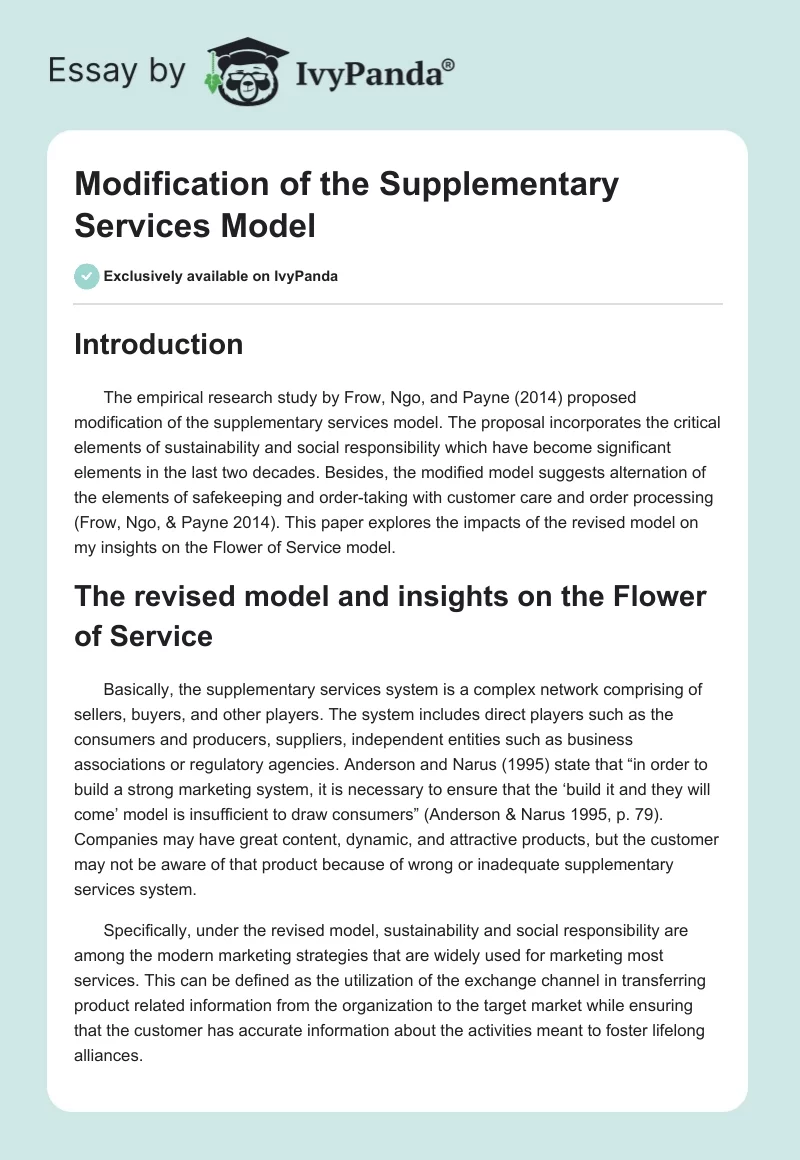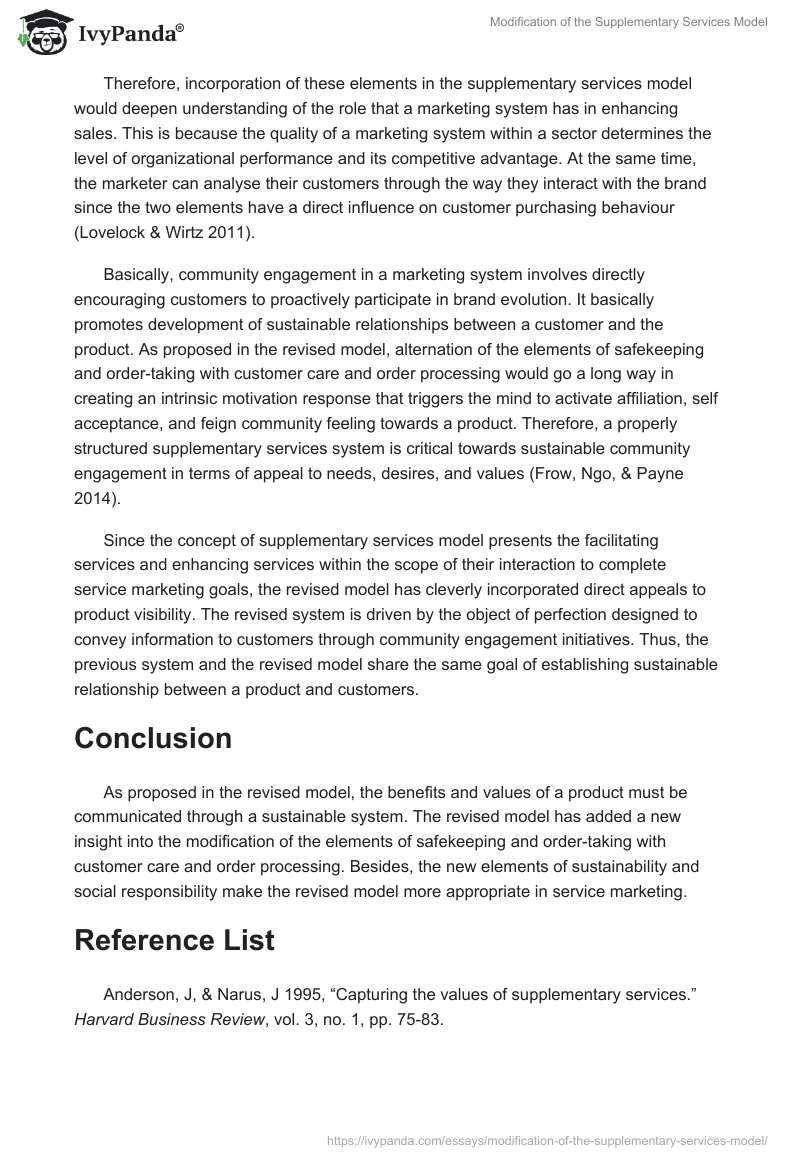Introduction
The empirical research study by Frow, Ngo, and Payne (2014) proposed modification of the supplementary services model. The proposal incorporates the critical elements of sustainability and social responsibility which have become significant elements in the last two decades. Besides, the modified model suggests alternation of the elements of safekeeping and order-taking with customer care and order processing (Frow, Ngo, & Payne 2014). This paper explores the impacts of the revised model on my insights on the Flower of Service model.
The revised model and insights on the Flower of Service
Basically, the supplementary services system is a complex network comprising of sellers, buyers, and other players. The system includes direct players such as the consumers and producers, suppliers, independent entities such as business associations or regulatory agencies. Anderson and Narus (1995) state that “in order to build a strong marketing system, it is necessary to ensure that the ‘build it and they will come’ model is insufficient to draw consumers” (Anderson & Narus 1995, p. 79). Companies may have great content, dynamic, and attractive products, but the customer may not be aware of that product because of wrong or inadequate supplementary services system.
Specifically, under the revised model, sustainability and social responsibility are among the modern marketing strategies that are widely used for marketing most services. This can be defined as the utilization of the exchange channel in transferring product related information from the organization to the target market while ensuring that the customer has accurate information about the activities meant to foster lifelong alliances.
Therefore, incorporation of these elements in the supplementary services model would deepen understanding of the role that a marketing system has in enhancing sales. This is because the quality of a marketing system within a sector determines the level of organizational performance and its competitive advantage. At the same time, the marketer can analyse their customers through the way they interact with the brand since the two elements have a direct influence on customer purchasing behaviour (Lovelock & Wirtz 2011).
Basically, community engagement in a marketing system involves directly encouraging customers to proactively participate in brand evolution. It basically promotes development of sustainable relationships between a customer and the product. As proposed in the revised model, alternation of the elements of safekeeping and order-taking with customer care and order processing would go a long way in creating an intrinsic motivation response that triggers the mind to activate affiliation, self acceptance, and feign community feeling towards a product. Therefore, a properly structured supplementary services system is critical towards sustainable community engagement in terms of appeal to needs, desires, and values (Frow, Ngo, & Payne 2014).
Since the concept of supplementary services model presents the facilitating services and enhancing services within the scope of their interaction to complete service marketing goals, the revised model has cleverly incorporated direct appeals to product visibility. The revised system is driven by the object of perfection designed to convey information to customers through community engagement initiatives. Thus, the previous system and the revised model share the same goal of establishing sustainable relationship between a product and customers.
Conclusion
As proposed in the revised model, the benefits and values of a product must be communicated through a sustainable system. The revised model has added a new insight into the modification of the elements of safekeeping and order-taking with customer care and order processing. Besides, the new elements of sustainability and social responsibility make the revised model more appropriate in service marketing.
Reference List
Anderson, J, & Narus, J 1995, “Capturing the values of supplementary services.” Harvard Business Review, vol. 3, no. 1, pp. 75-83.
Frow, F, Ngo, V, & Payne, A, 2014, “Diagnosing the supplementary services model: Empirical validation, advancement and implementation.” Journal of Marketing Management, vol. 30, no. 2, pp. 138-171.
Lovelock, H, & Wirtz, J, 2011, Services marketing: People, technology, strategy, Upper Saddle River, NJ: Pearson Prentice-Hill.


